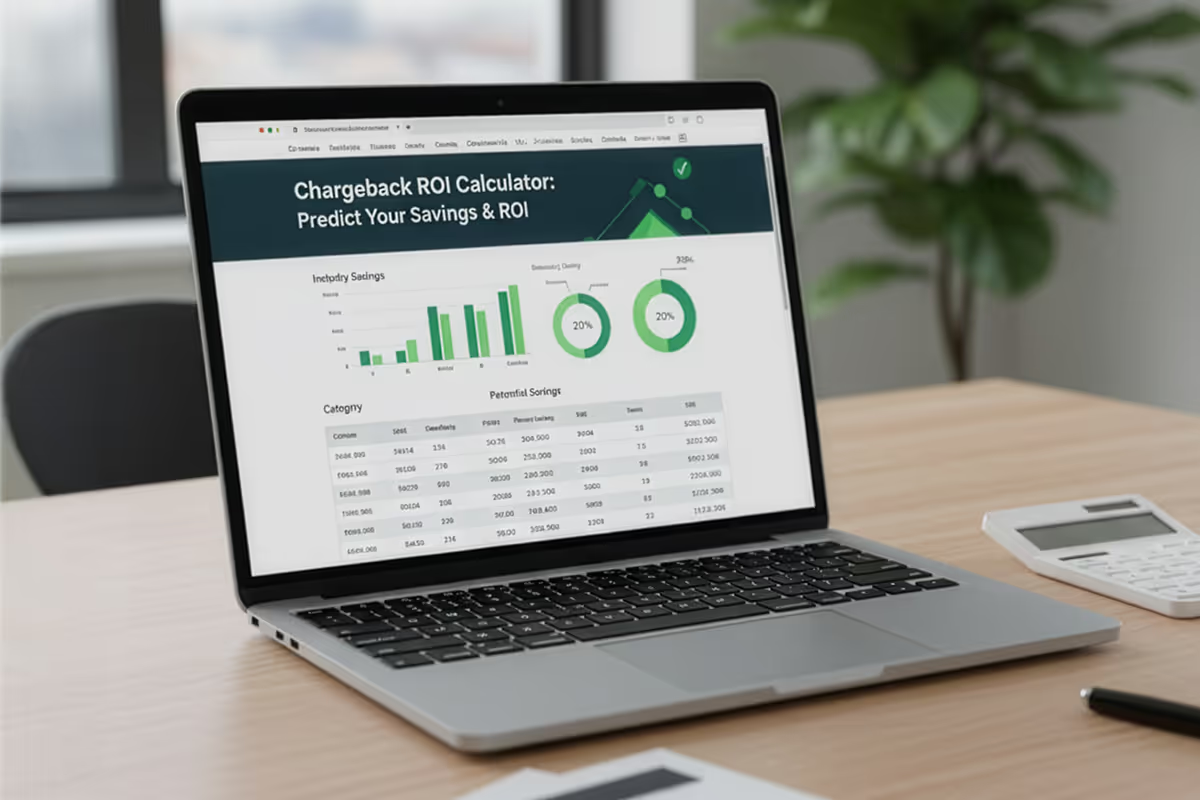
Many sellers on Amazon face a critical decision point in their business journey: whether to continue with Fulfillment by Amazon (FBA) or switch to Fulfillment by Merchant (FBM).
With over 60% of Amazon sellers using FBA, many are exploring FBM to gain more flexibility, reduce fees, or handle fulfillment independently.
Knowing how to change from Amazon FBA to FBM successfully is crucial for maintaining sales momentum.
While FBA offers convenience, FBM can deliver better profit margins if the transition is done with strategic planning and operational readiness.
The Actual Process of Switching from Amazon FBA to FBM
Changing from FBA to FBM isn't instant; it involves a structured shift that touches multiple areas of your Amazon setup. Here’s a simplified look at how the process unfolds from start to finish:
1. Decide What Products Will Move First
Rather than switching everything at once, most sellers start with a few SKUs—typically lower-risk or slower-moving ones—to test their FBM setup.
2. Align Your Internal Operations
Before flipping any listings, make sure your backend is ready. This includes having your shipping supplies, inventory tracking system, and fulfillment process in place and tested.
3. Update Fulfillment Method in Seller Central
Within Amazon Seller Central, you'll adjust your listing from “Fulfilled by Amazon” to “Fulfilled by Merchant.” This step is simple, but timing is crucial to avoid listing downtime.
4. Enter Your Own Inventory Quantities
Amazon no longer manages your stock once the listing is switched to FBM. You’ll need to manually input your available units and keep them updated.
5. Adjust Shipping Settings and Handling Times
Set realistic shipping timelines based on your actual capabilities. Many sellers start with 2–3 day handling while they refine their process.
6. Monitor and Refine After the Switch
Expect to learn as you go. Track your performance metrics (like on-time shipping and order defect rate), and make small improvements as you stabilize your new FBM workflow.
Over 40% of Amazon sellers plan to expand beyond FBA within the next year. But switching models isn’t just flipping a toggle; it’s a shift in how you run your entire business.
Preparing Your Fulfillment Infrastructure
A solid setup is essential for FBM. Here’s what you need to get your fulfillment operations ready.
In-House vs. Third-Party Fulfillment
When switching to FBM, you have two primary options for handling order fulfillment:
- In-house fulfillment involves managing everything yourself (or with your team), including warehousing, order processing, packaging, and shipping. This option provides maximum control but requires substantial infrastructure investment and operational expertise.
- Third-party fulfillment involves partnering with a logistics company that manages warehousing and order fulfillment on your behalf. While this reduces your direct control, it offers a middle ground between FBA and completely in-house operations.
For businesses looking to maintain professional fulfillment standards without Amazon's infrastructure, a fulfillment solution offers specialized services that can help maintain efficiency during your transition.

Setting Up Your Warehouse Operations
If choosing in-house fulfillment, you'll need to establish:
- Warehouse space: Secure adequate space that accommodates your current inventory with room for growth.
- Inventory management system: Implement software that tracks inventory levels, orders, and shipping information.
- Picking and packing stations: Create efficient workstations with necessary supplies (boxes, tape, labels, etc.).
- Shipping accounts: Set up accounts with carriers like USPS, UPS, FedEx, and DHL, and negotiate rates when possible.
Pro tip: Create detailed standard operating procedures (SOPs) for every aspect of your fulfillment process before making the switch. These documents will serve as training guides for staff and help maintain consistency during the transition period.
Managing Your Inventory During Transition
Handling inventory right during the switch is key. Here’s how to manage the move without disruptions.
Removing Inventory from Amazon FBA
When transitioning to FBM, you'll need to decide what to do with inventory currently stored in Amazon's fulfillment centers:
- Create a removal order: Through your Seller Central account, navigate to "Manage Inventory" and select "Create Removal Order" for the items you want to transfer.
- Choose the destination: You can have inventory returned to your designated address or disposed of (though disposal is rarely recommended during a transition).
- Monitor removal status: Track the progress of your removal orders, which typically take 10-14 days to process.
Remember that Amazon charges removal fees based on item size and weight. These fees are generally lower than long-term storage fees, so timing your transition to avoid storage fee assessment dates can be cost-effective.
Inventory Timing Strategies
A successful transition minimizes sales disruptions. Consider these timing strategies:
- Gradual transition: Convert products to FBM one at a time or in small batches, starting with slower-moving items to test your fulfillment system before handling high-volume products.
- Hybrid approach: Maintain some products on FBA while fulfilling others through FBM, especially during peak selling seasons when FBA's advantages might outweigh costs.
- Complete switchover: Set a specific date for full transition, coordinating inventory removal and new listing creation to minimize downtime.
Converting Your Amazon Listings
Changing fulfillment methods means updating your listings. Here’s how to make sure they reflect your new FBM setup accurately.
Listing Conversion Options
You have two main options for transitioning your listings:
- Create new FBM listings: This approach allows you to maintain your FBA listings while setting up parallel FBM listings, enabling a smoother transition.
- Convert existing listings: Change the fulfillment method on your current listings from FBA to FBM, which maintains your listing history, reviews, and ranking.
Step-by-Step Listing Conversion Process
- Audit current listings: Review all product listings to prioritize which to convert first.
- Update fulfillment settings:
- Go to "Manage Inventory" in Seller Central
- Select the products you want to convert
- Click "Change to Fulfilled by Merchant."
- Update inventory quantities to reflect your available stock
- Verify listing information: Ensure product details, images, and descriptions remain accurate after conversion.
- Adjust pricing: Recalculate your pricing strategy based on your new fulfillment costs, which are typically lower than FBA fees.
- Monitor conversion status: Check that your listings appear correctly with the "Fulfilled by Merchant" designation.
Handling the Buy Box During Transition
The Buy Box is crucial for Amazon sales success, and changing to FBM can temporarily affect your Buy Box eligibility. To maintain strong Buy Box performance:
- Keep pricing competitive (but don't drastically undercut your former FBA prices)
- Maintain fast shipping options, preferably 2-day shipping where feasible
- Ensure perfect order accuracy and on-time delivery
- Respond to customer inquiries promptly

It's normal to see some fluctuation in Buy Box win rate during transition, but this typically stabilizes as you establish a strong FBM performance history.
Optimizing Your Shipping and Delivery Process
With FBM, shipping is on you. Here’s how to keep deliveries fast, reliable, and customer-friendly.
Meeting Amazon's Shipping Requirements
Amazon has strict expectations for FBM sellers:
- Shipping timeframes: You must ship within your stated handling time (typically 1-2 business days).
- Delivery promises: Your chosen shipping methods must reliably deliver within the timeframe shown to customers.
- Tracking information: Provide valid tracking for all orders.
- Confirmation updates: Confirm shipments promptly through Seller Central.
Failing to meet these requirements can result in account penalties and lost Buy Box eligibility.
Shipping Options and Strategies
Consider these shipping strategies to remain competitive with FBA offerings:
- Regional carrier integration: Utilize regional carriers for faster, less expensive delivery in specific areas.
- Distributed inventory: Store inventory in multiple locations to reduce shipping distances and delivery times.
- Third-party logistics (3PL): Partner with logistics providers that offer nationwide 2-day shipping capabilities.
- Shipping software: Implement multi-carrier shipping software that automatically selects the most cost-effective shipping method for each order.
For sellers of specialized products like private label products, maintaining proper handling during shipping is particularly important for product integrity and customer satisfaction.
Maintaining Strong Performance Metrics
FBM success relies on meeting Amazon’s performance standards. Here’s how to stay on top of the key metrics.
Key Performance Indicators to Monitor
After transitioning to FBM, closely track these performance metrics:
- Order defect rate: Keep below 1% (includes negative feedback, A-to-Z claims, and chargebacks)
- Late shipment rate: Maintain below 4%
- Cancellation rate: Keep under 2.5%
- Valid tracking rate: Aim for 99 %+ orders with valid tracking information
- On-time delivery rate: Strive for 97%++ orders delivered by the promised date
Amazon evaluates these metrics over rolling 7-day, 30-day, and 90-day periods, so consistent performance is essential.
Customer Service Considerations
When you switch to FBM, you assume full responsibility for customer service:
- Response time: Answer customer inquiries within 24 hours.
- Return processing: Establish clear return procedures and process refunds promptly.
- Packaging quality: Use appropriate packaging materials to prevent damage during transit.
- Branded experience: Consider custom packaging or inserts to maintain a professional brand impression.
Pro tip: Create macros or templates for common customer service scenarios to ensure consistent, thorough responses even when handling increased inquiry volume during your transition period.
Managing FBM Costs and Profitability
Switching to FBM changes your cost structure. Here’s how to track expenses and protect your margins.
Understanding Your True Fulfillment Costs
When switching to FBM, calculate all aspects of your new fulfillment expenses:
- Warehouse space (rent, utilities, insurance)
- Packaging materials and labor
- Shipping costs across various carriers and service levels
- Returns processing
- Inventory management software
- Customer service staffing
Compare these costs against your previous FBA fees to understand your actual savings. Many sellers discover that while FBM reduces direct fulfillment fees, it increases operational complexity and requires investment in infrastructure.
Pricing Strategy Adjustments
With new fulfillment costs, reconsider your pricing strategy:
- Competitive analysis: Compare your prices against both FBA and other FBM sellers.
- Cost-plus pricing: Calculate your total costs (product, shipping, overhead) and add your desired margin.
- Strategic pricing: Consider keeping prices stable for high-volume products while adjusting others to maintain overall profitability.
- Shipping thresholds: Evaluate offering free shipping at certain order values to encourage larger purchases.
Common Challenges and Solutions
FBM comes with its own hurdles. Here’s how to spot common issues early—and solve them fast.
Inventory Management Complexities
- Challenge: Managing inventory across multiple channels without Amazon's centralized system.
- Solution: Implement inventory management software that integrates with Amazon and other sales channels to prevent overselling.
Shipping Delays and Costs
- Challenge: Meeting Amazon's delivery expectations without their fulfillment network.
- Solution: Negotiate rates with multiple carriers, consider regional carrier integration, and establish relationships with fulfillment partners in strategic locations.

Customer Service Scaling
- Challenge: Handling increased customer service volume previously managed by Amazon.
- Solution: Implement help desk software, create detailed FAQs, and consider outsourcing customer service during peak periods.
Buy Box Competition
- Challenge: Competing against FBA sellers for the Buy Box.
- Solution: Offer competitive shipping options, maintain perfect seller metrics, and consider strategic pricing to offset the FBA advantage.
Advanced Fulfillment Tactic: Split Inventory by Shipping Zones
Split your inventory across regional warehouses based on your top shipping zones. Analyzing order history by ZIP code lets you position stock closer to buyers.
This reduces shipping costs and helps meet Amazon’s 2-day delivery expectations. It’s a key edge when switching from FBA to FBM.
Use tools like ShipStation or Deliverr to automate zone-based fulfillment. This improves Buy Box chances and sets you up for Seller Fulfilled Prime. It also makes FBM more scalable without relying on Amazon’s network.
Level Up on Your Terms: Grow Smarter, Sell Freer
Transitioning from FBA to FBM marks a major step forward in your Amazon business. It offers more control and potentially higher margins, but also demands greater responsibility for fulfillment and customer experience.
The systems you build during this transition lay the groundwork for broader growth. With fulfillment under your control, you can test new products, enter new markets, and reduce dependence on any single platform.
Use this shift as a chance to rethink your strategy. Are there new categories or complementary products to explore? FBM gives you the flexibility to innovate and scale with fewer limitations.
FAQ
Related blogs
.avif)
Price Elasticity Of Demand Calculator: Predict Revenue Impact in Seconds
.avif)
High-Low Method Calculator: Discover Your True Fixed and Variable Costs
.avif)
Dynamic Pricing Calculator: Optimize Margins and Sell Smarter With Every Click


